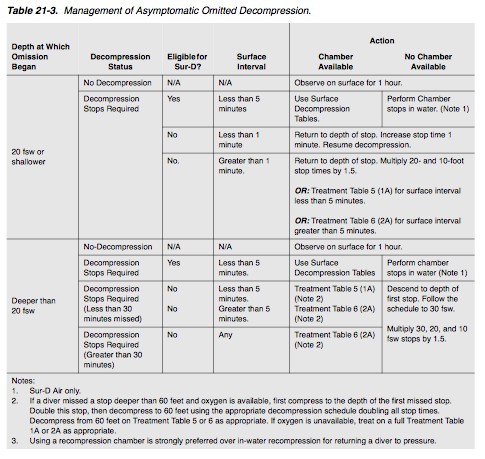Crush
Contributor
Please note: this post refers to missed deco stops, not missed safety stops.
How were you taught? Please respond with what an agency taught you and refrain from obvious comments like "you shouldn't miss a deco stop" or "get better training."
Let's assume that you aren't doing crazy deep dives where trimix is necessary.
NAUI: In our MD course we were recently taught that if you surface having missed a deco stop, do not re-descend, rather get to land, get comfortable, lay down, breath 100% O2, hydrate, and make sure you are being monitored for DCS. If symptoms appear, go to a hyperbaric facility. If not, no diving for 24 hours.
ACUC: In our OW course I seem to recall that we were taught to re-descend to 10 feet below our missed deco stop and begin to surface, but with an extra, (10 foot deeper) deco stop.
What does PADI teach? SSI?
How were you taught? Please respond with what an agency taught you and refrain from obvious comments like "you shouldn't miss a deco stop" or "get better training."
Let's assume that you aren't doing crazy deep dives where trimix is necessary.
NAUI: In our MD course we were recently taught that if you surface having missed a deco stop, do not re-descend, rather get to land, get comfortable, lay down, breath 100% O2, hydrate, and make sure you are being monitored for DCS. If symptoms appear, go to a hyperbaric facility. If not, no diving for 24 hours.
ACUC: In our OW course I seem to recall that we were taught to re-descend to 10 feet below our missed deco stop and begin to surface, but with an extra, (10 foot deeper) deco stop.
What does PADI teach? SSI?





